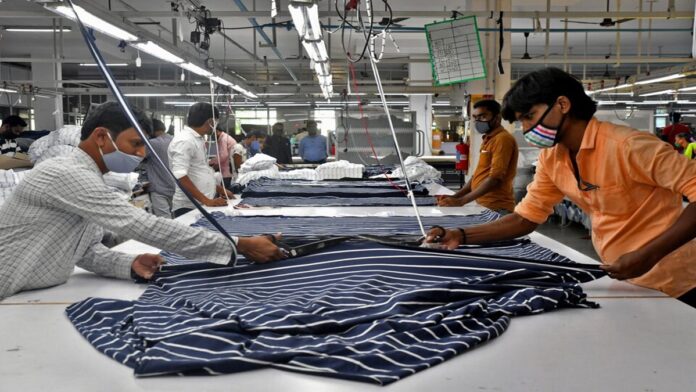US President Donald Trump has announced a flat 26 per cent tariff on Indian goods with some exemptions and according to analysts, this comes as a double-edged sword for India’s textile sector. While the increased tariff is likely to impact exports with the US being a major market for Indian textiles, it also gives India’s textile industry an advantage as its competitors like Vietnam, Bangladesh and China will face higher tariffs.
For the record, Vietnam is slapped with a staggering 46 per cent tariff on its textile exports, while Bangladesh and China are subject to 37 per cent and 34 per cent, respectively. Since textiles account for only 2 per cent of India’s GDP, whereas it contributes 11 per cent in Bangladesh and 15 per cent in Vietnam, the overall economic impact on India may be less severe. “With higher levies on other countries, India is better off,” said Deven Choksey Research.
ALSO READTrump tariff impact decoded – 3 key risks for Asia
Manish Jain, Chief Strategy Officer & Director, Mirae Asset Capital Markets, said, “India will have two-way impact of these reciprocal tariffs, 1st higher tariff on competing nations to support market share gains as China, Bangladesh and Vietnam are levied at much higher rate of 34 per cent, 47 per cent and 46 per cent respectively compared to 26 per cent on India. Secondly, the increase in prices to end consumers will reduce the overall demand, shrinking the market size.” Textiles typically have a price elasticity of demand between -1.2 to -2.0, meaning a 10 per cent price increase leads to a 12-20 per cent decrease in quantity demanded.
Trump announced sweeping new tariffs on countries based on US trade deficits along with a universal 10 per cent tariffs on all imports to the US. The new announcement will affect more than 180 countries with India, in particular, facing a 26 per cent “discounted reciprocal tariff”.
India’s textile sector still better off
India is already doing Bilateral Trade talks with the US which could potentially lower the tariffs in near future, but timeline is uncertain. While the reciprocal tariff on India is negative for domestic exporters but higher tariffs on China (20 per cent existing + 34 per cent new),
» Read More


